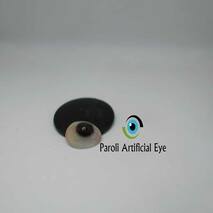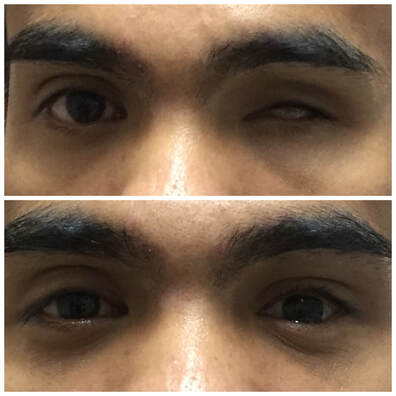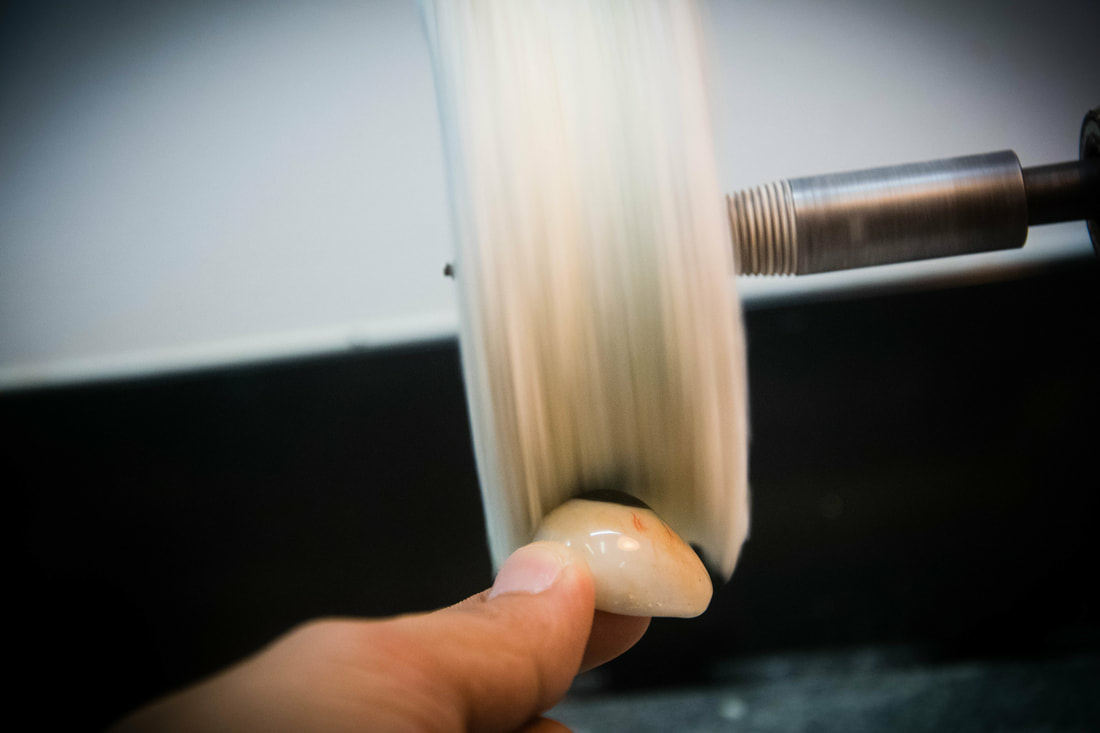Enucleation and Prosthetic Eye The eyes are one of the most important parts of every one’s body. It is actually the most highly developed sensory organs. However, there are some times that man tend to take eyesight for granted and eye problems develop that may lead to surgery and eye removal. However, there are already several available eye treatment and surgeries that one may choose when time comes that there’s a need for it. Enucleation and the use of prosthetic eyes are just some of them. What is Enucleation and Prosthetic Eye?  A Prosthetic Eye A Prosthetic Eye Enucleation is the surgical process of removing the entire eye which may be due to a severe injury or pain to the eye, tumors, infection, last stages of glaucoma, or cancer in the eye while the muscles and tissues that surround the socket are kept intact. After the surgical process, the individual is provided with an artificial or prosthetic eye which will be used to replace the eyeball that was removed. In most cases, the prosthetic eye is attached to the eye muscles in order to preserve eye movement which helps make the artificial eye look natural. Enucleation becomes necessary for an individual especially when he or she feels severe pain in the partially or completely blind eye because of the diseases or illnesses mentioned. Taking the surgical process would treat particular eye diseases and alleviate the pain in a patient's eye. It would also improve the quality of their life greatly (Kelly, 2018). When Enucleation and Prosthetic Eye are needed?  A Patient who had undergone Enucleation without an Artificial Eye(top) and after getting an Artificial Eye(bottom) A Patient who had undergone Enucleation without an Artificial Eye(top) and after getting an Artificial Eye(bottom) Valeshabad (2014) found out that relatively, pain in the blind eye is the most common indication of surgery which is followed by leukocoria and endophthalmitis. His study also stated that the main types of injury include accidents in the road or work, firecrackers, and injury from sharp objects. The surgery is mostly done under general anesthesia wherein it helps the patient to not feel any pain during the procedure. After the surgery, a conformer is positioned behind the eyelids. This helps to keep the shape of the eye even after surgery. A stitch is then made to hold the eyelids together for a few days. The artificial eye will replace the conformer in a few weeks time just after the surgery on the eye has sufficiently healed. During the healing process, the conformer may start to fall out in the first few weeks. The conformer could be replaced but the patient must make sure that it is cleaned with soap and water before being placed back in between the eyelids. Do Enucleation and Prosthetic Eyes have side effects? Every surgery has its own effects. The patient may feel a headache, nausea, or eye pain in one or two days after the surgery. The doctor will prescribe the patient with pain-relieving medicines to help the patient in the discomfort he or she will be having after the surgery. Once the surgical wound has healed, a follow-up visit is done by the patient. The eye doctor will then remove the conformer and replace it with an artificial eye. A topical antibiotic is given which should be applied to the wound several times for the following few weeks. How do Enucleation and Prosthetic Eyes help a patient? The prosthetic eye will give the patient benefits compared to deciding to not have one. These benefits include increased self-esteem, physical appearance, and proper facial function. The eyelids after a surgical procedure would most likely close in on itself which is why it is recommended for a prosthetic one to be placed. It helps maintain the eyelid movement as well as the shape of the eye. Without the artificial eye in place, the eyelids would not function properly. Also, most of the patients who have undergone enucleation suffer from self-esteem issues. They are afraid that the way people used to look at them will change. A prosthetic eye will help make their appearance look natural as the artificial eye is crafted and designed based on the other remaining eye. A patch most frequently makes them feel like they are different from the rest. With the prosthetic eye, however, there isn't much difference in their appearance ever since before they got an eye surgery which greatly boosts their self-confidence. How long does a Prosthetic Eye last and how to take care of them?  Having your prosthetic eye professionally polished is a great way to make it last longer. Having your prosthetic eye professionally polished is a great way to make it last longer. An artificial eye may last for less than 5 years. Within the third and fifth year of use, the artificial eye must be replaced because of the tendencies of the soft tissues to settle into the eye socket. There are certain things that can be done to take care of the prosthetic eye that the patient will be continuously using. When cleaning the prosthetic eye, rubbing alcohol or other chemical solvents must never be used. A contact lens cleaning solution either hard or gas permeable could be used. The prosthetic eye must also never be sterilized using heat. The frequent removal or cleaning of the prosthetic eye is not really something that is recommended. As long as the prosthesis feels comfortable to the patient, it should just be kept in place. However, there are certain times wherein mucous secretion within the eye socket makes the patient feel uncomfortable. It is then recommended for the patient to do a certain cleaning procedure on the prosthetic eye. It is also highly recommended to wear a pair of glasses which has shatterproof lenses. This is a great way of protecting the eyes in the case of a facial injury. (See: Importance of professionally polishing your prosthetic eye) Most of the patients who have undergone this surgical procedure are worried that it may affect their lifestyle. But, in fact, those who had undergone this procedure can even play sports. Specific safety glasses can be worn in order to ensure the protection of the eye which had undergone Enucleation. Patients can also do leisure activities such as swimming. However, it is recommended that goggles must be worn to preserve the life of the prosthetic eye and to avoid any damage. With today’s modern medical technology, the current prosthetic eyes are made look so much like a natural eye. That no one could tell the difference. It might only look like artificial if the eyelid is dropping a little bit which can only be noticed if it was observed by someone close-up. It may be hard for most patients to adjust because losing an eye greatly affects them emotionally. Patients who had a hard time dealing with the thought that they have lost their eye could consult a psychiatrist to help them cope with the situation and continue living the normal life. Having a prosthetic eye may not change or affect one’s lifestyle. However, it may affect the way the patient sees himself or herself as someone with a disability. It is important to provide options like that of a prosthetic eye. ------------------------------------
References Valeshabad, A. (2014). Enucleation and evisceration: Indications, complications and Clinicopathological correlations. Int J Ophthalmol,7(4), 2014th ser., 677-680. doi:https://dx.doi.org/10.3980/j.issn.2222-3959.2014.04.17 Yom, K. H. (2018, September 17). Enucleation and Evisceration: What to Expect. Retrieved April 5, 2019, from https://webeye.ophth.uiowa.edu/eyeforum/cases/279-anophthalmic-socket.htm Enucleation Surgery - Removal of the Eye » New York Eye Cancer Center. (2016, June 15). Retrieved April 5, 2019, from https://eyecancer.com/eye-cancer/treatments/enucleation-surgery-removal-of-the-eye/ Losing an Eye: Enucleation and Prosthetic Eye FAQ. (n.d.). Retrieved April 5, 2019, from https://www.allaboutvision.com/conditions/enucleation-prosthetic-eye.htm Prosthetic Eye (Ocular Prosthesis): Surgery, Care, Types. (n.d.). Retrieved April 5, 2019, from https://www.webmd.com/eye-health/prosthetic-eye-ocular-prosthesis#1
0 Comments
Leave a Reply. |
Welcome to my blogsiteThis is where my updates and stories about my practice in the art of making Artificial Eyes are posted Archives
July 2021
Categories
All
|
First time to wear prosthesis? Consultations are free!
|
HoursTues-Sat: 11:30am - 5:00pm
SM City Clark, Clark Field, Pampanga |
Telephone(045)499-0122
09324617478
09268903097
|
|

 RSS Feed
RSS Feed